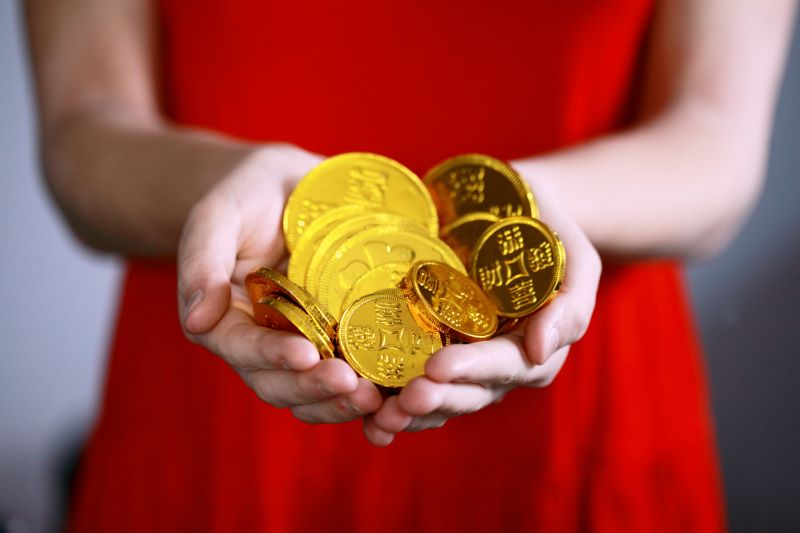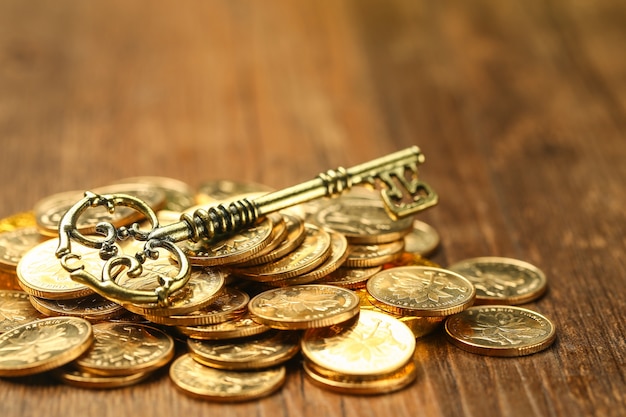How To Tell If A Gold Coin Is Real Or Fake
by Arnab Dey Finance Published on: 16 May 2022 Last Updated on: 19 May 2022

Gold is among the most precious metals globally that are incredibly beautiful and of high value. It’s also an excellent investment option for many investors. First, this wonderful metal neither tarnishes, rusts nor dissolves.
It’s also one of the best electrical conductors and is often used in technological equipment. Aside from its metallic qualities and rarity, gold could also provide numerous advantages to owners.
Therefore, many people want to have gold items in their possession, be it gold bars, coins, or valuable heirlooms. If you already have one, you might be wondering if they’re real or not to ensure their value.
This article could help you learn the most efficient measures that’d help you test the authenticity of your gold item and know if it’s real or fake.
Pro Tips To Spot A Real Gold:
Intrinsically, gold is among the most popular and expensive metals in the world. Along with platinum and silver, this magnificent metal is an efficient investment option for many investors, making for a good hedge against inflation and tangible assets.
Be it jewelry, bullions, or the most valuable gold coins in the world, having any item of gold can be considered a good investment opportunity for many people.
Whether you’re a seasoned collector or a casual gold coin owner, you’re probably wondering if what you have is real or not. To help you out, listed below are some of the most efficient ways you can consider testing the authenticity of your gold item.
1. Find A Hallmark
If you’re having doubts about the authenticity of your gold item, one of the best ways to determine if it’s real or fake is to search for a stamp. It refers to the tiny hallmark stamped on the item indicating its karat weight. Typically, the hallmark number in gold items differs depending on the location or area they’ve been produced.
For instance, the United States of America uses different measurements for gold hallmarks, which commonly range between 24k and 12k. If a gold item has a 24k hallmark, it’s considered pure gold.
However, if it’s 12k, the coin is composed of gold and other metal alloys. On the other hand, if an item has an 18k hallmark, it’s also of good value.
If you’re a collector from Europe, you might’ve encountered the ‘750’ and ‘1000’ hallmarks, with the latter indicating a pure gold item. But, if your gold coin or any item doesn’t have any hallmark, then it might not be authentic.
Or, the hallmark may have worn over time due to its constant exposure to human perspiration, chemicals, and other prominent factors. Also, the gold item could be genuine despite lacking the hallmark if it was made earlier than the timeframe of hallmarking.
2. Search For Markings

Aside from the hallmark, another efficient way to spot real gold is to search for a letter mark. Gold letter marks could be GP, GF, and GEP. For gold-plated items, it only means that the object isn’t pure gold but made of other types of metals or gold alloys.
Then, it’s covered by small traces of gold through electroplating. Typically, gold-plated items range from expensive jewelry and electrical connectors to circuit boards.
On the other hand, if it has a GF letter mark, the item has a thin layer of gold bonded to another metal through a mechanical method. Lastly, gold electroplated items have some similarities with gold-plated ones. These are both other types of metals plated with thin layers of gold.
In some cases, items are gold plated to attract first-time buyers and benefit cash-for-gold operators. If you’re wondering if gold-plated and gold-filled items are genuine, one could say that they’re more on the insignificant side due to the amount of gold used.
Although the gold plating may be authentic, with how little gold is used, such items don’t hold much value and are sometimes considered fool’s gold.
Related Resource: 5 Factors Which Can Affect the Price of Gold
3. Use Nitric Acid
If you want to check the authenticity of your gold item further, you can also consider using nitric acid on it. First, you can make a small mark on the gold item. Since gold is relatively soft, this process wouldn’t be challenging for you.
After that, you can apply a scant amount of nitric acid to the scratch. Then the next thing to do is to wait for a couple of minutes to see if there’d be any chemical reactions on the item. If what you have is genuine or has high components of gold, there shouldn’t be any reaction.
Take precautionary measures during the experiment since nitric acid is a harmful chemical. Ideally, you’ll need to use gloves and goggles and perform the test in a well-ventilated room. Or you can also ask for a professional’s help to safely experiment with you.
4. Determine The Density
Besides the chemical reaction, you can also tell if a gold coin is real or fake using its density. Specifically, the usual weight of gold is around 19.3 grams per ml or cubic centimeter. It means that the closer the weight of your coin is to the said density, the more gold value it has.
Before that, you might need to prepare a scale first to measure the item’s density. Also, a container or a beaker would suffice for holding the object in place. After placing the beaker on a hard, steady surface and filling it in half, you’ll have to weigh the item and record its weight in milliliters.
Then, you could gradually lower the coin into the beaker and take note of the water level. After that, you’ll need to deduct the first recorded measurement from the latter one to know the difference in the water level and get the volume.
To determine the density and weight, you’ll have to divide the volume by the item’s weight. So, if your gold coin’s weight is around 40 grams and its volume ranges from approximately 2.2 ml, its total density would be 18.18 grams per milliliter. Therefore, your item has more gold value.
5. Scratch In A Ceramic Tile
Scraping your gold item is also another way to test its authenticity. Since gold is relatively soft and isn’t entirely scratch-resistant, you’re most likely to have immediate results with just a tiny mark. But, you’ll have to make the mark as small as possible to avoid damaging the item.
First, you can scratch the item using a ceramic tile or any hard surface. Then, lightly scrape the coin against the hard surface until you see bits of it peeling off. If the coin leaves gold flakes, then the item is gold. However, if it leaves a black mark, the object is most likely fake.
6. Test With Water

If you prefer a harmless way to check if your gold is real or fake, you can test it using water. Firstly, you’ll need a half-filled container or beaker to cover the item with water. Then, you can slowly drop the coin into it. If it’s real, then it should sink since real gold is heavy. On the other hand, your gold coin might be fake if it floats.
Apart from that, if there are any signs of rust or tarnish on your gold coin after submerging it into the water, it’s also an indication of it being fake since real gold doesn’t tarnish or rust. Since there’ll be a risk of your coin rusting, you can consider using something not too valuable while doing this experiment.
7. Utilize A Magnet
Since real gold’s level of magnetism is considerably little to none, you can also test its authenticity using a magnet. Aside from being a safe alternative, it’s also cheap. You’ll need a magnetic object to see if it’ll attract the coin.
But, take note that the item might get drawn if it’s not pure gold, especially if mixed with magnetic components like iron. Or, the object might repel magnetic attraction if it’s made of alloyed metals, which aren’t magnetic.
Although these simple experiments could give you considerable indicators of whether certain gold items are authentic or not, the best way to test their authenticity is to consult professionals to have them appraised. Hiring a certified jeweler could significantly help you skip the complicated processes and avoid the hassle, aside from getting credible results.
8. Look For A Green Or Bluish Tint

Another way to know if an item is genuine or fake is to search for a greenish or bluish tint on one’s skin upon wearing them. This test is simple. You have to hold the coin between your hands for a couple of minutes and wait for any chemical reactions. The sweat on your hand will produce a chemical response on the item, indicating that it isn’t real.
Some of the most common signs of discoloration may include black, bluish, or green tints on your skin upon contact. But, if it doesn’t react or there’s no sign of discoloration, then the item is authentic.
Also, you can try putting a liquid foundation first on your skin to check an item’s authenticity. But compared to the first test, using a liquid foundation might produce a different reaction if an item is authentic gold. If there’s a black tint or discoloration on your skin upon rubbing the object, it’s real gold.
Bottom Line
As mentioned earlier, gold is among the most valuable metals globally that offer plenty of advantages to owners. For instance, gold is a strategic inflation hedge and an excellent investment asset. It also has the highest demand and can maintain its value amidst market volatility and instability.
Therefore, many people want to possess gold items. If you want to test the authenticity of your gold coin, then the best thing to do is to hire reliable jewelers to get them appropriately tested. Or, you can also try some of the methods mentioned above for better results.
Read Also:



































































































